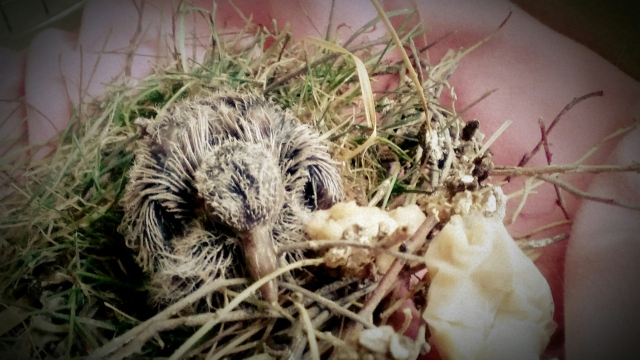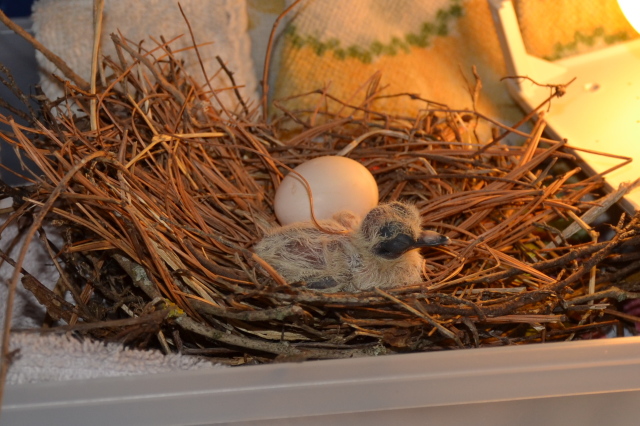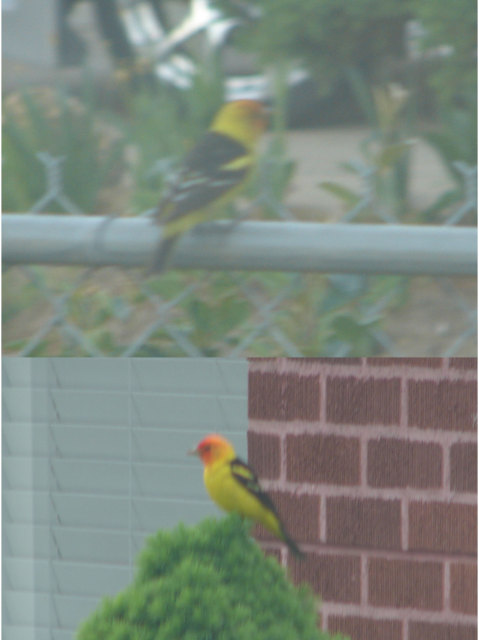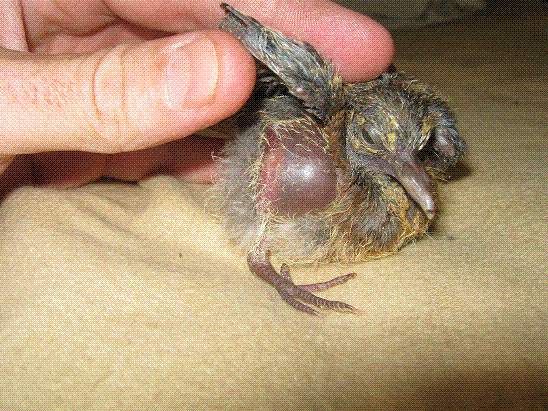QuestionI would like to know how to clip their wings of a parakeet.
AnswerHi again, Brandon. Here's a website with a good wing diagram and some information. http://birdmart.com/reference/wings.html
A did a Google search using the phrase: "clipping bird's wings" and many websites came up.
Chrys
----------------
Hi, Brandon. Thanks for posting your question.
If this will be the first time you've clipped a bird's wings, you'll probably need another person to help you. After you do this a few times, you'll probably be able to do this by yourself. Be sure to read all of this before you start.
You'll need a regular pair of scissors (or small pair). If the keet isn't tame, you'll need a face wash cloth or gloves or small towel of some sort in order to restrain the bird. When restraining a bird, you have to make sure you don't hurt it (squeeze it too tight that it dies, snap it's neck, etc.). To keep from being biten whether you hold a bird by hand, gloves, or by towel, and to keep from snapping it's neck while it's wiggling around, with the bird's back in the palm of your hand and the beak facing out, place your thumb on one side of the face and the first finger on the other side of the face (don't smash it's eyes!). You can hold the bird's head and neck straight like this and it can't bite you or hurt itself (I hold tame and untame birds of many sizes like this). You'll have to pull the wing out carefully and gently from behind the bird to clip. If the bird trusts you and is tame, you shouldn't have to do this. Have some baking flour or blood coagulant of some sort (Stiptic powder...usually sold with dog items) available in case you accidently clip a blood feather (explained later). Be sure the scissors are clean.
The goal is to clip the longest 4-6 feathers on each wing. These would be the ones at the end of each wing when you spread the wing...not the feathers closest to the body. The number of feathers you'll need to clip depends on whether you want the bird flightless or partially flighted. If you want s/he flightless, clip the first 6 feathers; if you want s/he partially flighted, you can clip the longest one (the one at the end), maybe the second one, too, and leave the rest alone. A bird only needs the longest one or two, in order to be able to fly. Sometimes you have to experiment a little, depending on the bird, because a strong flyer might be able to fly when another won't.
When you clip the feathers, only clip them up to the point where they meet the second row of feathers. In other words, you don't clip a feather all the way up to the bird's body. If you look closely at a keet's wings when they are spread, you'll see 3 rows of feathers: the row closest to the body (lesser coverts), the next row (primary coverts), then the long primaries (feathers 1-10) and the secondaries (the remainder of the feathers on the outside row). Feather 10 is the longest primary and feather 1 is the shortest primary. So, you are going to clip primary feathers 10 - 5 (if you cut 6 feathers) up to where they meet the primary coverts (you'll be clipping each feather about half way up the wing). Do not clip the remainder of the feathers in this row (the secondaries).
To begin, you'll have to hold the bird either by hand or by using gloves or a towel (gloves are easiest). Once you have the bird restrained, gently spread the first wing like you would a deck of cards, i.e., grasp the wing gently and fan the feathers out so you can see the feathers you need to clip. Look first at the wing structure and where the primaries meet the coverts. Look to see if there are any blood feathers where you want to clip. Blood feathers are feathers that are still growing. You don't want to clip a blood feather because it will bleed (which is what you use the baking flour or blood coagulant for). A blood feather will not be grown out completely (like the ones next to it) and the feather shaft close to the body will be dark inside (indicating the presence of blood). The feathers you should cut will have white feather shafts. These are often hard to see on keets because their feathers are so small, so I don't worry much about it as long as I can stop any bleeding. Take the scissors and cut each feather (10 - 5 or 10-6 or whatever you decide) to the correct point. Cutting the feathers does not hurt the bird in any way. Do the same thing on the other wing. ALWAYS clip both wings. If you only clip one wing, the bird will fly in a circle, become disoriented, and could injure itself.
If you happen to see any bleeding that dosen't stop right away (right away meaning ASAP...they don't have much blood in their little bodies), locate the source (which could be a broken or clipped blood feather), pull the blood feather out completely by grasping it with tweezers or small needlenosed pliers and pulling it (which will stop the bleeding). You can try using the flour or blood coagulant first, but if it's a broken blood feather, the feather will have to come out sooner or later to keep it from continuing to bleed.
Couple things to remember. You need to try to accomplish this as quickly as possible because the bird will become overheated by your 98.6 degree body temperature against it's body temperature (which is elevated due to the procedure causing some stress). If you run into problems where it is taking longer to perform this procedure than usual, and the bird is open-mouth breathing or showing any signs of overheating, let the bird have a break to cool down, relax a bit, regroup, etc. (offer s/he a drink of water). After the wings are clipped, see the effect of your clipping by holding the keet about 3-4 feet off the floor or above a bed or couch...something where s/he will have a soft landing, and let the bird fly/soar/fall down onto the soft area. Remember...the bird may not be used to not being able to fly and will expect to be able to fly the same as s/he did before the clipping! If you did a real good job, the keet should hit the soft area hard (this is why you want to use something soft)! Next time, you might not want to clip as many feathers. If you did a good job, s/he should glide at an angle down to the soft area. If the bird can fly straight, you probably need to clip another one or two. If the bird can gain any height, you didn't clip enough feathers.
After a while, the feathers will need to be clipped again. You can tell when this is needed when s/he can gain altitude when flying. You can also see the long primary feathers extending down the back at the base of the tail when they need to be clipped. You can also spread the wings to see what's going on.
I'll see if I can find any diagrams on the internet and send the links to you. You can also do the same type of search on Google using something like "bird" or "parrot" anatomy, clipping bird's wings, bird wing structure, or something of the like in the search window.
Let me know how it comes out! If something I've described doesn't make sense or you have more questions, come back.
Chrys

 Eggs! :(
QuestionBroken Egg
QUESTION: I understand lovebi
Eggs! :(
QuestionBroken Egg
QUESTION: I understand lovebi
 Baby Dove Care
Question
Baby Bird 1 Baby Bird 2
Hello, to
Baby Dove Care
Question
Baby Bird 1 Baby Bird 2
Hello, to
 mourning dove
Question
baby mourning dove
Hello,
My boys found a baby
mourning dove
Question
baby mourning dove
Hello,
My boys found a baby
 Wild or Domestic?
Question
Pretty Birds
There are these three birds in my
Wild or Domestic?
Question
Pretty Birds
There are these three birds in my
 Baby Pigeon
Question
Cosmo
Hi Roger
We picked up a baby pigeon, ap
Baby Pigeon
Question
Cosmo
Hi Roger
We picked up a baby pigeon, ap